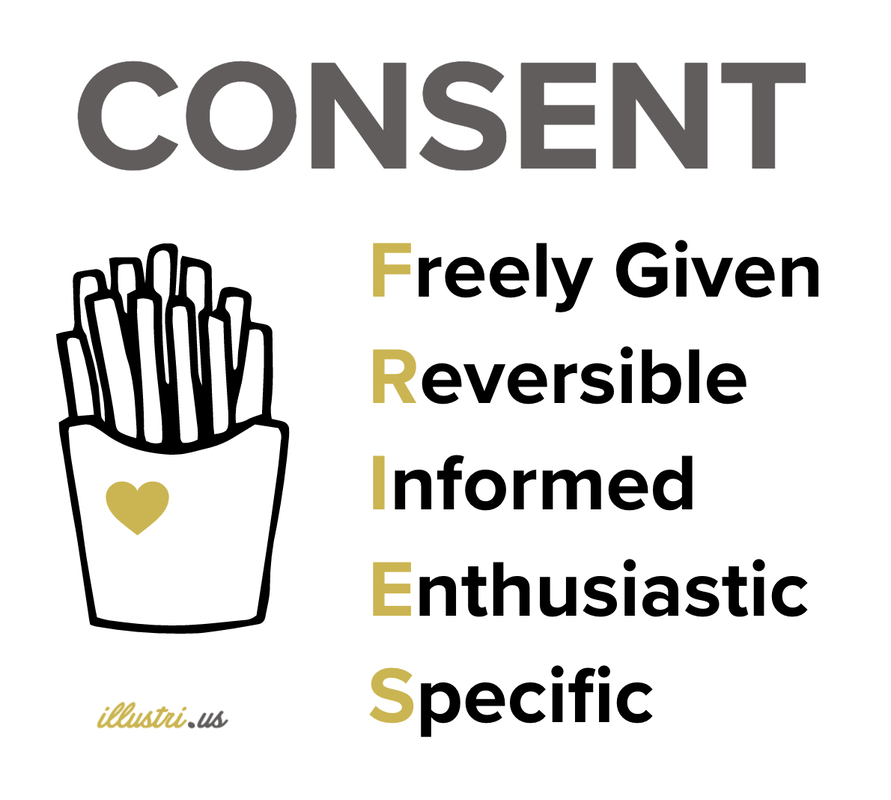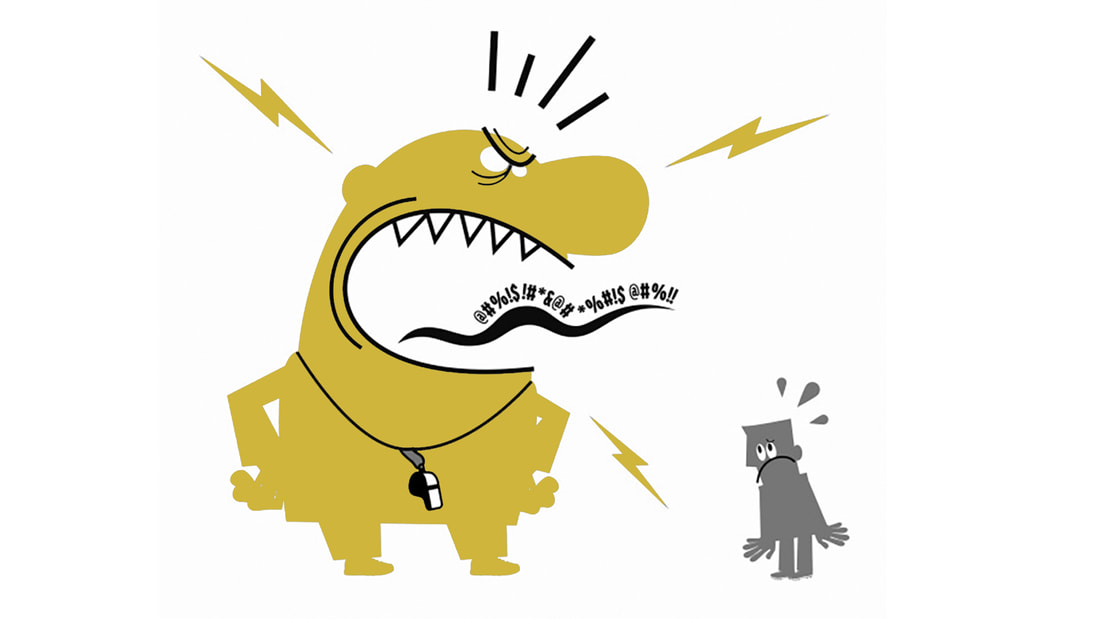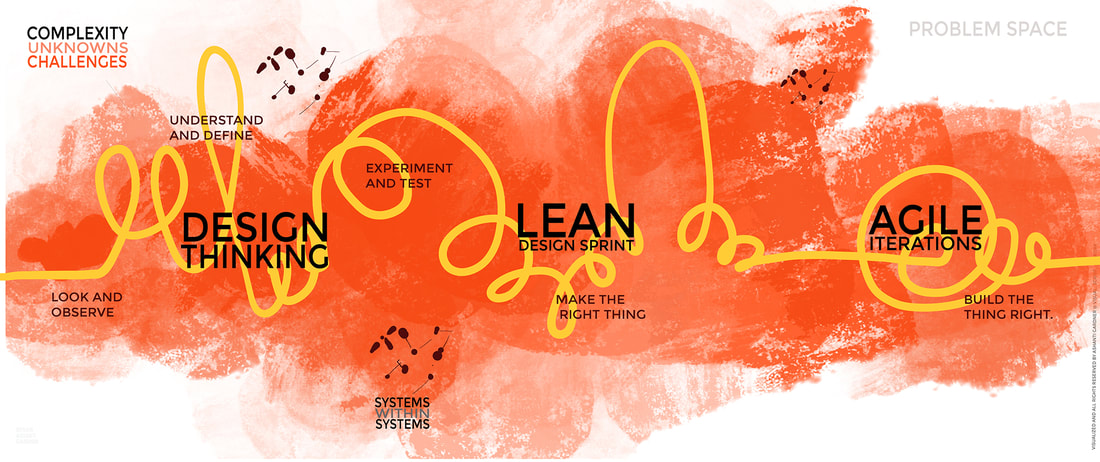|
DEI (diversity, equity, and inclusion) initiatives are growing quickly in organizations around the world. Leaders and entire departments dedicated to DEI – or EDIB (equity, diversity, inclusion, and belonging) – are being installed in for-profit and nonprofit organizations. These teams are committed to deeply embedding DEI principles into the values and actions of the business so that it can be more accessible, welcoming, and empowering.
Here we’ll discuss the “E” in DEI. Compared to diversity and inclusion, the words equity and equality (with which equity is sometimes substituted) are ambiguous terms that can be defined very differently from organization to organization. According to Robert Harris, Director of EDIB at National Audubon Society, it's "not advisable to use equity and equality interchangeably." "In general," he says, "equality is when folks receive the same resources in amount and proportion and equity is when differences are recognized. Resource allocation varies based on those differences to achieve equality." How you implement your DEI initiatives will depend on how these terms are defined. Your definition of these terms will also influence your culture deck, hiring process, team charter, operating agreements, mission statement, media/investor relations, etc. Making sure that they are clear and meaningful for everyone on the team is very important. Equity may be defined in the following ways:
To review, diversity means that you have various people in the room, equity means that there is awareness that they are not all on equal footing, and inclusion means that you have a process for engaging them. Equality is the outcome of people being equally resourced. If you’d like to have a conversation about team performance, team design, or team development, please schedule a discovery call today.
0 Comments
Consent is a charged word. You usually only hear about it when someone has filed a complaint with the HR department or someone has crossed a boundary they shouldn’t have crossed.
You may be wondering what does consent have to do with my work? Consent is defined as “permission for something to happen or agreement to do something.” An example of this might be, “no change may be made without the consent of all the partners.” Consensual leadership is about encouraging acceptance and agreement before actions are taken and this approach has never been more relevant considering the power differentials between leaders and teams. We recently worked with a Board Chair of a well-known faith community who told us they had never consented to filling the role. She was told that it would be an interim position and that certain criteria would be met (a job description would be provided, regular reviews would happen, there would be administrative support, etc.). The model of governance allowed for her to be nominated without her consent, and she was voted in. She begrudgingly did the work, the criteria were never met, and she ended up serving a term of three years. She admitted that she would have been more than willing to devote herself to fundraising and community development – activities that would have really lit her up – but no one asked her. By the time three years had passed, they were desperately trying to rebuild after the pandemic and critically needed someone focused on bringing in money and reaching out to the community. Unfortunately, it was too late. She was burned out and resigned. We also work with married teams in our executive coaching program. We call it “Power Couples Coaching.” Unsurprisingly, sometimes issues that hinder these intimate relationships also affect the bottom line and their ability to turn toward each other, communicate effectively, and lead as a team. In these cases, we find it useful to discuss consent in terms of how it affects the communication inside the household and the business (i.e. ill-timed business updates over dinner, or worse, during date night). FRIES is an acronym for the elements of consent developed by Planned Parenthood to inform and educate young people about the importance of consent in relationships. Here’s what it looks like when applied to organizations.
And, enjoy the FRIES! In complex business environments, leadership cannot be off-boarded or outsourced. As leaders and executives, sometimes we blame the bad things happening around us on others, or the market, or circumstance.
Things like ineffective meetings, staff turnover, teams not hitting their goals, people holding back, lack of work/life balance, and not sticking to the strategy. These have nothing to do with other people and everything to do with the way you show up as a leader. It’s been said that “people don’t leave bad jobs, they leave bad managers.” The opposite is also true. People don’t follow ideas, they follow other people. Is your mission confusing and convoluted? Are there too many initiatives to remember? Have you made your vision of the future (and their role in it) crystal clear for the team? If not, chances are they will burn out. If they stop believing in your capacity to lead, you will no longer be their leader. No amount of bonuses or self-care days will undo it. Executives and leaders experiencing complexity and overwhelm can do two things to establish leadership in complex environments:
This alignment will look more like group storytelling than strategy. It will involve all of your people and involve them in visualizing things like retrospectives, journey maps, and cones of plausibility. Consider how the diversity of voices, perspectives and competencies you convene and empower today will impact, amplify, drive, or disrupt your work in the future. Visionary leaders prepare for this long tail and are able to manage the business along multiple horizons. The emotional benefits for leaders who can do this include:
Some measurable results we have seen in leaders and businesses that can enable this kind of thinking and behavior in those around them include:
As mentioned in our book, Visionary Leadership, these types of leaders are able to do three things well:
Raise more visual leaders. Celebrate them. Watch them shine. Guest post by Ashley Preston You did it. You finally took a chance and hired a coach to help you. They are promising to help you turn your life and your business around, but as you work with them, you can’t help feeling like something is a bit off. Are you having buyer’s remorse? Or is it something else? Are you comfortable talking to them? Are they making it easy for you to open up and share what you need to with them? Or do you find yourself hesitating to use the services you paid for? If you’re having doubts, you might want to ask yourself if you’ve hired the right coach. Here are five signs it might be time to look for the exit. 1. They Bully You or Harshly Judge You You hired a coach because they could help you in areas where you admitted you’re struggling. They are there to encourage you; not make you feel guilty or dumb for not knowing something in the first place. No one should make you feel inferior for owning up to your own shortcomings and getting help to improve those personal limitations. That’s how we learn and grow as people. If your coach is making you feel like you’re inferior, if they are talking down to you, or dismissing your concerns without valid reason, you’re not dealing with the kind of person who should be working as a coach. You can’t solve your real problems when you can’t talk about them without fear, and you can’t be truly vulnerable with someone who doesn’t show you the respect you deserve. 2. They Minimize Your Experience, Education, or Training Coaching takes a great deal of compassion, empathy, and patience. It requires the coach to step into your shoes and understand where you’re coming from. A good coach will point out your strengths and remind you how far you’ve already come. That coach would embolden you to use whatever tools are at your disposal in order to move forward with confidence while helping you sharpen up other areas in your life so you can be even more effective. However, if you have a coach who is telling you that because your training or experience didn’t come from the “right” place, or it’s not valid, then you have a crappy coach. It doesn’t matter how you learned what you know. As long as you have your facts straight and are confident in your experience, your perspective is valid and your knowledge is valuable. Don’t let anyone tell you otherwise, especially the coach who was hired to highlight what you bring to the table. No one gets to dim your shine! 3. They Tell You What Kind of CEO You Should Be Did you build a business? Did you make decisions and sacrifices to get where you are? Did you create something and see its success bloom? With all that experience, you have developed your own style of work and management. While coaches can help you reflect on parts that might not be working, or help you see some fresh perspectives that you haven’t considered, it is not your coach’s job to change everything. Why fix something that isn’t really broken? Don’t trust a coach who can’t see your leadership potential and success. A good coach will work with you to create a better mindset so you can be the best version of yourself, not tear you down and rebuild you from the ground up. Walk away from the coach who makes you feel like a terrible CEO when it’s clear that most of what you’re doing worked long before they walked into the picture. 4. They Tell You They Know Exactly How to Fix Your Business One size doesn’t fit all. Some coaches want to believe that a one-size-fits-all approach will work, but it is simply a lazy approach that doesn’t take into account the complexities of your operation or the free market. While a good coach can provide feedback, structure, and advice, these things should act as guidelines. You should have the room to ultimately make decisions that fit your own business without feeling guilty or stupid for doing so. If your coach is saying things like “just trust the program, it works for everyone” there’s a good chance that their system isn’t battle-tested, and they don’t understand the importance of giving you the power to make the choices that will ultimately serve your company best. Only you will know what that is, and a good coach will know when to encourage you to do so. 5. They Bombard You With Too Much Information You need to walk before you can run. A coach is there to develop your potential. A good coach wants to facilitate the learning process by challenging your thoughts and creating an environment that enables you to take it all in. They know that you should master the fundamentals before moving on to more advanced routines. Good coaches care about how much you get out of the program. A bad coach, however, will likely throw a massive amount of information at you, sometimes in no particular order. They do so because oftentimes it makes them feel smart, and if you can’t take it all in, then it’s not their fault that you don’t succeed. It is a lazy approach that leaves you wanting. If your coach isn’t taking the time to explain things, and if they aren’t giving you information that is digestible, you’re not going to benefit from the program like you should. There Are Too Many Coaches Out There. Don’t Settle for Bad Coaching. You should get what you paid for. You should feel supported and seen by a coach. You should feel like they are there to help you. You should feel like they are learning from you as much as you’re learning from them. You should be able to trust them and their vision for you. If you don’t feel that way about your current coach, then it’s time to make a change. Don’t settle for less than what you deserve. Contact the team at Illustrious, ask about our Amplified Executive Coaching program, and let’s get you back on track with someone in your corner who believes in you.
Great leaders hire great coaches.
Over the last 7 years, I have had the honor and privilege to coach some of the most gifted, passionate and powerful business leaders — from other coaches to small business owners to Chief Innovation Officers. Coaches don’t need to understand their clients or the business, they need to believe in them. They need to see the utmost potential in their client and identify the growth and development opportunities for that executive to leverage. People hire coaches for a reason. Some of my clients were at a crossroads, overwhelmed by uncertainty while trying to navigate their business at the length of a flashlight beam in the darkness. Some of them were stuck — immobilized with fear and overwhelm because of financial pressure or because they were comparing themselves to others. Some were growing so fast that they were sickened by their own velocity. Some were bobbing in uncharted waters, depressed, isolated, and needing physical contact or someone to talk to. Some had found success and simply wanted to find ways to give back to their community or show up as a better leader. In every case, we talked about it. I asked questions. I noticed where topics were avoided, or where their body language shifted, or where they simply lacked the belief in their own power and agency. And then, I asked a different question. Each time, they came away with some kind of insight and commitment to change -- one massive action (or small, next, best step) that they could take toward growing their business or becoming the visionary leader that they were meant to be. Here are the top 8 areas in which I’ve seen clients move the needle, with sometimes game-changing breakthroughs. 1. SELF CARE An insight into self-care may be as simple as “I need to have more fun!” Other times, the client has realized “I need to take care of myself otherwise I can't help anyone else.” I’ve also heard clients say, “I’m the one creating all of this pressure on myself.” This is important because they have realized it is their own hand on the levers and gauges creating the tension and conflict within not only themselves but their relationships. One client, who had been quarantined during the pandemic, was so affected by the isolation that she couldn’t focus on her business at all. I could see in her downcast eyes and her buckled shoulders that she was sad. I could hear in her voice (esophageal constriction and vocal fry) that she was weak. By the end of the call we had identified a new, very specific, goal: “I am starved for touch so this week I will schedule a coffee with my friend and hug them for at least 20 seconds.” *Coaches are not therapists. We don’t look back at wounding, we look forward and focus on goals. If a client displays symptoms of depression it is our responsibility to refer them to (or encourage them to seek out) a clinical approach. 2. MINDSET Sometimes clients forget how amazing they are. They forget everything they’ve accomplished or only remember the last thing they did (the play before the timer ran out, the last speech of the campaign). Imposter syndrome can creep in and their mindset may move from a dynamic, growth state to rigid and fixed. By reminding clients how amazing they are, and inspiring them to affirm their attributes or accomplishments aloud (sometimes very loud), they can turn that mindset around. I’ve heard things like, “Wow! I’ve done some amazing things in my life and I need to remind myself what a badass I am.” One client, who doubted their worthiness, pushed back on her own negative self-talk saying, “No. I deserve to make good money. I want to share my business and my mission with the world. In order to make that happen, I need a bigger platform. So I need to keep suiting up and showing up.” 3. PERFECTIONISM / FEAR Resistance feeds on fear. Recovering perfectionists will tell you they deal with a chronic and crippling fear of failure and disappointing others -- that they simply cannot launch version 1.0 because it won’t be good enough. They may say they have “high standards” and that their superpowers lie in “planning” and “thinking things through.” The coaching goal is not to make the client smarter, but more effective. And that requires thinking and action. I like using the analogy of the sea and the stars. The sky represents perfection. We can gaze upon it from afar, appreciating the beauty of our sunsets or the splendor of the Milky Way. We can use the North Star to guide us and chart a clear course. The waters we’re on, however, are choppy -- tossing us back and forth, threatening to swallow us whole. The boat we’re sailing is constantly being rebuilt and repaired. Life (and your experience or interpretation of it) is imperfect. Don’t confuse the water with the stars. The best you can hear from a client is that “expecting perfection is unrealistic and unfair to myself and others.” 4. TIME MANAGEMENT / STRATEGY The brain is not designed to hold all of your appointments and deadlines. It is not intended to retain your annual strategic plan or your team’s objectives and key results. That's what mark-making and visual tools are for. Write that shit down. The most surprising and staggering observation from my years of coaching is the amount of business owners and executives who don’t have a handle on their schedule or their plan. Some are wasting time where they shouldn’t. (“If you’re saying yes to this, what are you saying no to?”) Some don’t use a calendar or they use too many. Some use a calendar for their business, but not for their family, leaving their spouse and children feeling stranded, angry, and confused. When we break the big thing into smaller things, I’ve heard clients say, “That doesn’t feel intimidating. My brain can handle it when it’s broken down into smaller chunks.” For small business owners, this is vitally important. I’ve heard them say things like “I need to create a visual sales pipeline to track my leads so that opportunities stop falling through the cracks.” When it comes to time management, I do a happy dance every time I hear a client say, “I will buy a planner and start writing down my commitments” or “I will look at my Google Calendar every morning so that I feel like I am more in control of my day.” 5. STORY It’s important that my clients know what story they’re telling. I do a lot of StoryBrand workshops, helping organizations put their client in the center of the story, elevating their customer as the hero, and showing up as their guide. We talk about the work of mythologist Joseph Campbell and novelist Kurt Vonnegut. We talk about The Hero’s Journey and the shapes of stories. When coaching clients consider the beginning and middle of their story from the outside, it’s sometimes easier to imagine where the ending should logically take them. I’ve heard clients have major insights such as, “Oh. I’m not the Hero at all. I’m the Oracle.” I’ve also heard them say, “I’m further along in my journey than I thought I was” and “All the ingredients of hope and change are in my story. I just need to get better at telling it.” One client decided to tap into her own history as a survivor of abuse in order to help others tell their story and grant them the power of choice. She said, “So many people feel like they don’t have a choice. If I can create choice for others in restricted spaces, there is unlimited potential.” 6. MARKETING / SALES From writing polarizing copy to creating compelling content, marketing is something I love helping my clients think about. I spent over ten years leading a marketing team in the media industry. Inbound marketing, advertising, and event activation/sponsorships are in my blood. One of my clients was struggling to build an annual content calendar and had brainstormed a bunch of ideas she thought were failures. She had been focused on generating one great tagline to describe a year-long program and had what she thought was a list of 10 garbage ideas. I asked her to read them to me. One after another she said the most amazing things that left me wanting to learn more. I didn’t hear a list of slogans or taglines, but a list of succinct, compelling topics. They were all the things she wanted her clients to learn. I told her that she was correct -- she had failed to write a tagline, but she had succeeded in writing 10 of the 12 monthly themes for her content calendar. She only needed two more. Her jaw dropped. “You’re right! These are great! Each one of these could be a monthly theme that includes a live video, a blog post, a newsletter, a guest interview on my podcast, you name it.” Another client admitted to “getting awkward” during the sales process -- usually right after telling her prospect the cost of her services. “I spend all this time building rapport, and then after I say the dollar amount, I get quiet and business-like and something changes,” she said. “I know they can feel it.” “Why on earth would you shift your approach halfway through a sales call,” I asked. “Is it because you switched from words to numbers?” “No,” she laughed. “Is it because you think you’re charging too much?” “No. In fact, I could probably raise my rates.” “Then what changed? What’s different at that moment,” I asked. “I’m scared,” she admitted. “For the first time in the conversation, I’m afraid they’ll say no.” After that, we found various ways for her to release the pressure and expectations she put on herself going into each sales call as well as to keep her energy consistent when talking about money. 7. GROWTH Some of my coaching clients have felt like they are “drowning” in the rising waters of change or queasy from the speed at which the business is scaling. Growth is change and change is hard. There are three types of change -- developmental (when things naturally grow, unfold or evolve), volitional (the boss has updated our sales goal, so we need a new strategy) and circumstantial (we couldn’t have predicted that the volcano would erupt, but it has, so now we run). When navigating growth, it’s important for most of my clients to know who or what is causing the change, and whenever possible, have agency or a sense of control over the direction. I’ve heard clients say “I need to reach outside my comfort zone” when skilling-up or moving from competence to excellence. I’ve heard them say, “I need to look outside my bubble” when hiring new team members. I’ve also heard them say, “I know this change is coming. There’s nothing I can do to stop it. And I can handle the growth!” 8. IDENTITY Mindset is important for confidence and self-image, but the client must also identify who or what they want to be. If you want to be a rockstar, but don’t see a charismatic leader when you look in the mirror, the audience will know you’re bluffing. They’ll smell it a mile away. If you want to be a successful business owner but think of yourself as someone who “isn’t that good with numbers,” your numbers will reflect it. You don’t have to be Mick Jagger or James Brown to be a successful bandleader and front-person. And you don’t have to be a mathematician to be a business owner. You only have to see yourself as who you imagine yourself becoming. This is what facilitates change in an individual, when the smoker commits to the vision of themself as someone who doesn’t smoke. This is what facilitates personal and professional development, when the administrative assistant commits to the vision of themself as the VP of Operations. They do the things and make the decisions that person would. They surround themselves with the kind of people that person would hang out with. This is important when developing vision and purpose in business. Knowing whether you are an accountant or a “fractional CFO to experts in the manufacturing industry” can make all the difference in the way you position yourself, talk about what you do, and connect with prospects. I’ve heard clients say, “I now know what kind of leader I am and it feels good.” One of my clients was a former therapist who had transitioned to a group coaching model. She was excited and intimidated by the Wild West of the unregulated coaching industry. She had spent years following guidelines; encouraging her patients to lick their wounds and talk about their worst times; avoiding giving direct advice, not making recommendations about helpful resources, books or podcasts; and not sharing or disclosing her own story. Now, as a coach, she was expected to do the opposite of all those things. Her inner therapist would raise its fearful voice and tell her it wasn’t right to do those things. It would say she wasn’t qualified and that she might cause harm to someone by giving them the wrong advice or by being too tough on them. She was in a real identity crisis. One day, she had enough. The desire to grow her limitless coaching business far outweighed the desire to battle with insurance companies over copay, and she said, “That’s it! I’ve got to tell my inner therapist to back off when she says I shouldn’t do those things. I’m a coach now.” If you’re interested in hiring an executive or business coach, sign up for the Amplified Executive Coaching program here. See you on our next call! According to Turi McKinley, Executive Director at frog design, “Design thinking is just a fancy name for the creative process.” The ability to think like a designer, through multiple iterations, and learning from the worst failures is the most important skill a leader can have. Design thinking is rooted in empathy and the ability to put the customer or client at the center of the journey. Design thinkers use physical and virtual space to expand and extend their intelligence and are unafraid to try new things. The best design thinkers use visual tools to explore new avenues of value for the business. The executive should be testing and building not just products, but entire worlds. Here are the top four abilities of design thinkers. They can be used to directly address the four problems of business (listed below) and they are so simple you can start practicing them today. 1. Frame (and Re-Frame) the Problem Take a step back, look at it from a different angle. Use multiple lenses and literacies interchangeably. What does it look like as a spreadsheet? A project plan? A to-do list? A GANTT chart? A drawing with Sharpies on butcher paper? Consider the human impact (subjective), the organizational or relational impact (intersubjective), the business or bottom line impact (objective). Ask yourself, “How else might I/we look at this?” Give yourself permission to play, be curious and creative. 2. Enable Experimentation There is no such thing as failure. View everything as an experiment, and you will always get results. If you are always testing and learning, then you will have valuable data that can be reviewed and synthesized into your next launch. Additionally, it stands to reason that results from testing on any target group will carry over to similar users. Design thinking is less of a process and more of a sequence. Model a bias toward making in the business (always be prototyping) and schedule time for this to happen. If it’s not on the calendar, it’s not real. 3. Communicate Your Ideas As a leader, you must come back from (not overcome) the exhaustion, overwhelm, and fatigue. After regaining a sense of clarity and purpose, you must be able to open your mouth and broadcast those big, wild, visionary dreams to the team again and again -- “painting done” until it’s done. Smart leaders know they must do this visually. Think of the coach at the front of the room sketching out the play on the whiteboard. Think of the best PowerPoint presentation you’ve ever seen (OK, I lied, that one doesn’t exist). Think of the first time you were shown how to use a tool or paintbrush. Think of a political speech that moves the hearts and minds of the people. People don’t follow a business, they follow leaders. In most cases, it’s not the leader they’re drawn to, it’s the challenge that the leader is able to articulate. What challenge are you asking your team to help you overcome? 4. Direct the Team The best CEOs lead from the bottom of the pyramid. They know that they will get the results and outcomes they need through other people. Not only are they focused on a succession plan, with at least two people lined up behind them -- mentoring and teaching others what they need to know in order to succeed -- they are encouraging and facilitating collaboration among team members. The team needs to be able to turn toward each other to create tools and solutions in the leader’s absence. They should be equipped with the best resources, given permission to make decisions, given access to “lab” space where they can experiment, and given permission to fail. Demonstrate the process, model the best behavior, show them what you want done, and your team will not let you down. Four Big Problems
And, here are the top problems that business leaders find themselves in. These challenges to growth or innovation can be remedied by directly applying a little visual aptitude (and the abilities described above). 1. Big Picture Paralysis One of our clients told us their strategy felt like “a tumbled bail of rope.” They needed the line to be clear and hanging at the ready. Our job was to lead them through the process of liberating each of their lines of business from snags and knots. Business is complex and messy. And the overload of information can make our brains slow down, or worse, come to a halt. If you’re experiencing this, you may be hearing or saying things like, “I can’t get my priorities in line” or “I don’t even know where to start.” Solution: Reframe the Problem 2. Reliance on Process Sometimes we’re lazy. Sometimes we want to read a book or watch a video and have someone else give us the answers. Sometimes we want to take the easy way out. Unfortunately, in business, there is no proven method or set of instructions to follow. You are not recreating a recipe to prepare that perfect dish you saw on YouTube. You are not creating a piece of clothing from a pattern. Following steps 1-4 will not get you a repeatable outcome. When you are stuck in “step reliance,” you are destined for disappointment and you may be saying things like, “I wish someone would just tell me what to do.” Solution: Enable Experimentation 3. Exhaustion There are many reasons you feel tired. It can be from informational or emotional overwhelm. It could be the strain of mode-switching from the constant pivoting and responding that’s required in your business. It could be that you aren’t managing your time or work effort wisely. Sometimes leaders simply feel oppressed by the unknown -- a sense of uncertainty that is not the invigorating or adventurous kind. For whatever reason, if you are feeling exhausted, pushing through it will never solve the problem. Stop. Walk away. Take a breath. Take a nap or a vacation. Return with clarity and strength. Solution: Communicate 4. Overcontrol Holding on too tightly to the reins of your business will limit collaboration and severely hamper the open sharing of ideas. You might be creating the illusion of collaboration by having meetings where the team brainstorms possibilities only to end up returning to your original thought or argument, saying, “well, we really have to do this” or “I’ve made an executive decision that we will go this way.” If you are focused on control, you may also be too concerned with things like loyalty or team members being “all in” instead of measuring and getting actual results. Solution: Direct the Team Guest post by Jennifer Oppelt Great leaders are thoughtful and deliberate, not impulsive, reactive or demanding. Leaders motivate, encourage collaboration and inspire others to lead. There’s no shame in admitting that you have room to improve as a leader. We all do. The first step is awareness. As an executive, here are some red flags -- indicators on your dashboard -- that will let you know if you are the bottleneck or source of your team's dysfunction. 1. It feels like you’re wasting time in meetings Do you have an objective for the meeting -- a reason to meet or something to accomplish? Has your sales meeting turned into a training/coaching session? Has your weekly standup turned into a festival of grievances? Are you asking for input from the team only to circle back to your original idea or argument? Get a grip on your meeting flow. My husband wrote a book about this. 2. Turnover / Employee Churn Your people aren’t sticking around. It’s an even bigger warning sign if you’re having trouble retaining your top talent. You know what they say about the losing poker hand. If you look around the table and can’t tell who it is, it’s you. There are many reasons why people leave jobs. Their position may lack purpose and fulfillment. Their strengths may be underutilized. Growth opportunities may not be available. Or, they may not align with or respect company leadership. You must take personal responsibility for creating a work culture that is engaging and inspiring. 3. The team is not hitting their goals The team might still look as busy as ever, but there is a decrease in productivity. They might be unclear on the objectives. As Brene Brown instructs, you may need to “paint done” for them. This means providing a high level of visual detail so that the outcome is crystal clear. With a clear vision of the target and the proper words of encouragement, any team can get motivated. 4. People seem to be holding back Your team members used to be filled with brilliant ideas but they’ve stopped pitching them. Your new hires have a certain sparkle that seems to fade once they get into the grind of the day-to-day. Your team is no longer providing feedback, opinions or pushing back against your ideas. They’ve given up or are just saying “I don’t know.” This isn’t normal. If you want a culture of contribution and collaboration you need to listen to your team, make sure they feel valued and incorporate some of their ideas and feedback. 5. You or your team have no work/life balance If you are working 24/7 and you can’t step away from the business to take a week’s vacation, something is seriously wrong. No one likes to think of themselves as a micromanager but that’s exactly what you are if your team can’t make decisions or move projects forward without your constant involvement. Empower your team to lead. Set them up for success with clear expectations and remove obstacles that prevent them from taking ownership. Cross train your team and provide accessible SOPs so that everyone can enjoy time off while the business runs smoothly. Keep an eye on team members' workloads and hire proactively to avoid burnout and costly mistakes from hiring in panic mode. 6. Implementing or sticking to a strategy feels impossible Succeeding without a plan is possible, but not sustainable. You can build the plane as you fly it for a while but things start falling apart when you don’t take time to plan. Constant change and pivots create chaos which leads to confusion and eventually mistrust. The time you spend on creating and onboarding your team to a strategy is a worthwhile investment. With a good strategy you can get clear on team priorities, assign accountable champions and define measurable outcomes that let you know if you are on track.
In my executive coaching groups, I’ve proposed the question, “What is a Visionary Leader?”
The responses vary. Some describe leadership in terms of spatial orientation (“first through the door,” “stand with,” or “servant leader”) while others describe a leadership that is visceral and relational, having more to do with presence than position. Below are some examples of each. It’s possible that, as a leader, you feel more than one of these, or some combination. Regardless, it’s clear that when people describe Visionary Leadership, they think of something greater than themselves -- something that is expansive, inclusive and multi-dimensional. What makes a leader visionary may be their ability to switch between these styles depending on the situation, organization or project. SPATIAL ORIENTATION 1. Leading from above You may be tempted to think of “leading from above” as implying hierarchy (or worse yet, patriarchy). You may think of the traditional, top-down, “command and control” leadership roles of corporations past. However, what I hear when people describe this orientation is that the leader is put on a platform or pedestal by the team. This gives them someone to look up to and also gives the leader line of sight across organizational divides (see Vision below). 2. Leading from below The best CEOs lead from the bottom of the pyramid. They know that they will get the results and outcomes they need through other people. This “servant leader” knows their role is to clear blocks and obstacles for the team in order to keep them motivated and productive. 3. I go first Some leaders want to be the first through the door. They are willing to take the bullet or the hit to prove something to the team. These kinds of leaders might be described as pioneers or trailblazers. They might be the kind of leader who will show the team instead of tell them. These executives -- those leading from the front -- need to occasionally look behind them and make sure the team is still there. 4. Leading from behind The rarest of these is someone who leads from behind. This is the pack-leader wolf who leads her group from the rear, monitoring those at the front, watching for attack from all sides. This type of leader makes sure they have a clear line of sight into the team, its interdependencies, weaknesses and threats. They make it a priority to have the right people in the right seats. 5. Standing with (or alongside) This kind of leadership looks more like advocacy or mentorship. It may be described by others as “handholding” or “propping up” but this orientation puts the leader and team member on equal footing. Don’t confuse this type of leadership with the manager who would rather be your friend than your boss. These leaders show up as a thinking partner, collaborator or a coach. They bring a coaching mindset to bear on each problem, asking the right questions and allowing the team member to be responsible and accountable. 6. Collaboration This type of leadership looks like a circle (or a dance) where the spatial dynamics shift and change with the phases of growth of the group. Traditionally, a circle or council is considered to be a more “feminine” (read: marginalized) model, though movements like Holacracy are attempting to bring these models into the mainstream -- and make the old new again. EMBODIED QUALITIES 1. Vision (Seeing) These leaders are the eyes of the organization, seeing what others can’t. They have an ability to perceive and process large amounts of information, which gives them a birds-eye-view of the business and insight into team dynamics. (See “Leading from above”) 2. Heart (Hearing) These leaders are said to have their “finger on the pulse” of the business. They spend time listening and responding intuitively to subtle changes. They are also said to be the “heartbeat” at the center of the organization that keeps the blood (energy) pumping. 3. Empathy (Feeling) These leaders are described as highly empathetic. They occupy the interpersonal “we space.” They value language and human interaction. Their style is highly relational, emotionally intelligent and communicative. (See “Collaboration”) I’d love to know what Visionary Leadership looks and feels like to you. Please leave your thoughts or insights in the comments. |
Details
ABOUT THE AuthorJoran Slane Oppelt is an international speaker, author and consultant with certifications in coaching, storytelling, design thinking and virtual facilitation. Archives
March 2024
Categories
All
|












 RSS Feed
RSS Feed